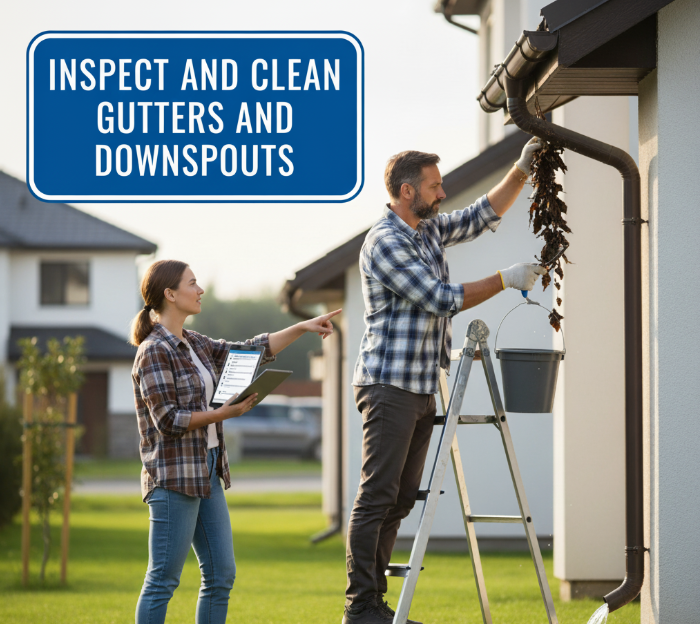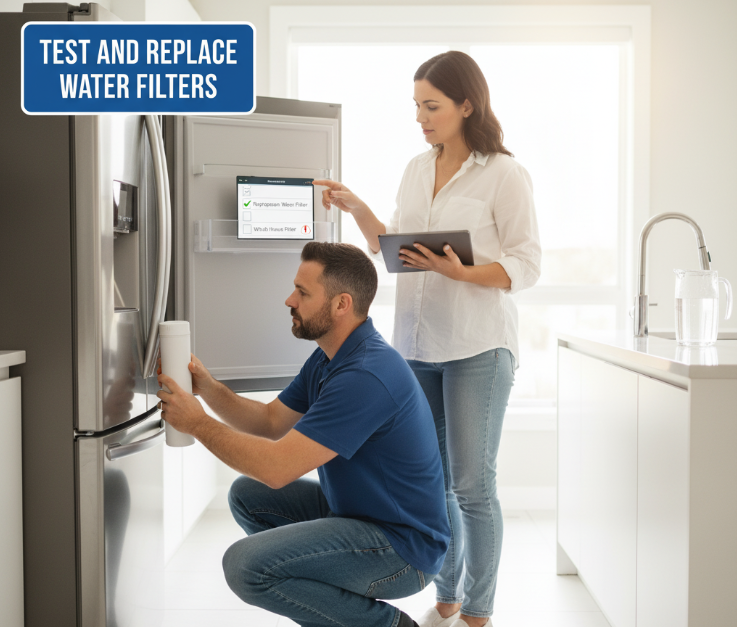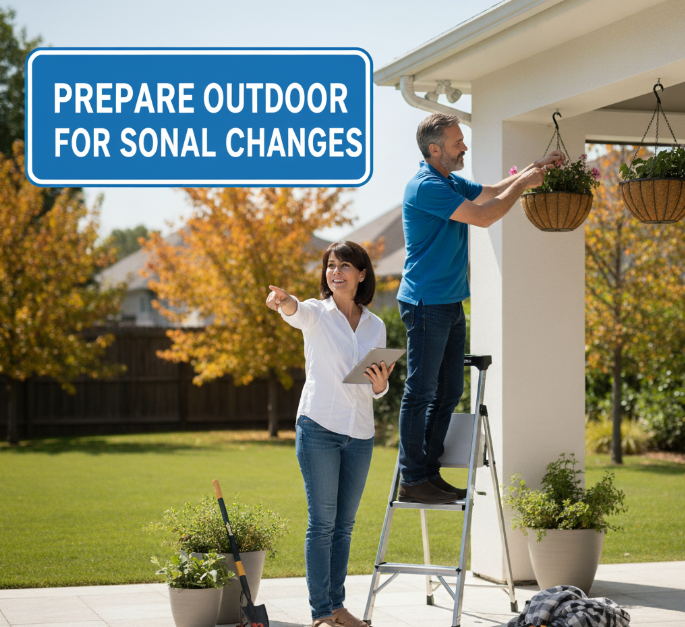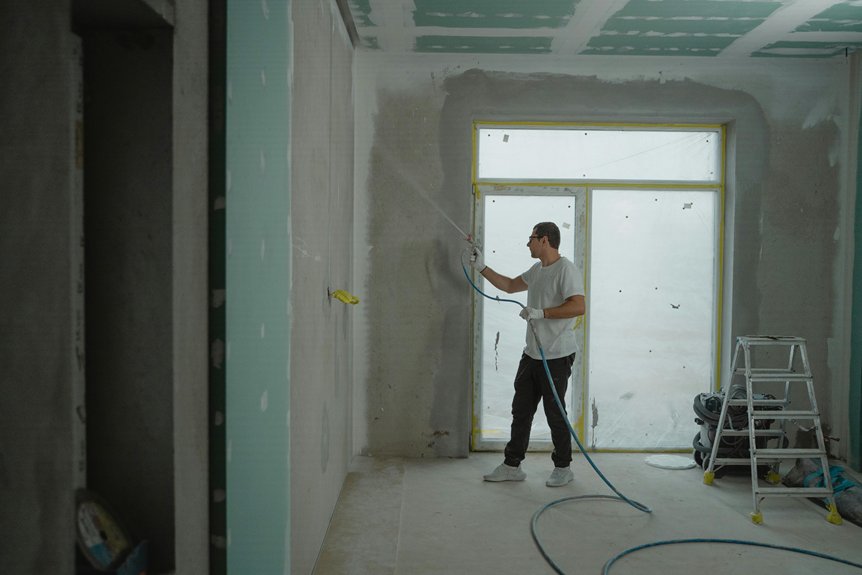Keeping your home in top shape requires a solid maintenance calendar. By tackling essential tasks like gutter cleaning and checking smoke detectors, you can prevent costly repairs and guarantee safety. It’s not just about fixing things when they break; it’s about proactive care. Wondering what other must-do tasks should be on your list? Let’s explore ten key activities that will enhance your home’s longevity and comfort.
Key Takeaways
- Schedule seasonal gutter maintenance to prevent water damage and ensure proper drainage from your home.
- Conduct HVAC system servicing twice a year to maintain efficiency and prolong lifespan.
- Regularly test and replace safety devices like smoke and carbon monoxide detectors for family safety.
- Prepare garden beds each season by mulching and rotating crops to enhance soil health and productivity.
- Create a comprehensive maintenance calendar that prioritizes tasks based on seasonal requirements and inspections.
Inspect and Clean Gutters

As the seasons change, it’s important to inspect and clean your gutters to prevent water damage and mold growth. Regular gutter maintenance is vital for your home’s health.
Start by checking for debris like leaves and twigs, which can block water flow. Use a sturdy ladder and gloves for safety.
Check for debris like leaves and twigs that can obstruct water flow; always prioritize safety with a sturdy ladder and gloves.
During seasonal gutter inspections, look for signs of damage, such as rust or cracks, and address them promptly.
Don’t forget to make sure downspouts direct water away from your foundation.
Incorporating these gutter maintenance tips into your routine will save you time and money in the long run, keeping your home safe and dry.
Check Smoke and Carbon Monoxide Detectors
Every six months, you should check your smoke and carbon monoxide detectors to guarantee they’re functioning properly.
Start by testing each unit; simply press the test button to confirm an audible alert. Replace batteries if needed and clean the exterior with a damp cloth to remove dust.
Regular detector maintenance is vital for your family’s safety. Don’t forget to review your safety checks; replace any units older than 10 years, as they lose effectiveness over time.
Keeping these detectors in top shape can save lives, so make it a priority on your home maintenance calendar!
Service HVAC Systems
To guarantee your home stays comfortable year-round, servicing your HVAC system regularly is essential.
Schedule HVAC maintenance at least twice a year, ideally before peak seasons. This includes cleaning or replacing filters, checking refrigerant levels, and inspecting ducts for leaks.
By keeping your system in prime shape, you not only extend its lifespan but also enhance energy efficiency, saving you money on utility bills.
It’s a simple task that guarantees peak performance, so don’t overlook it.
Test and Replace Water Filters

While it might seem easy to forget about water filters, testing and replacing them regularly is essential for your health and the quality of your drinking water. Different filter types have varying lifespans and effectiveness, so stay informed.
| Filter Type | Replacement Frequency |
|---|---|
| Activated Carbon | Every 6 months |
| Reverse Osmosis | Every 2 years |
| Sediment Filter | Every 6-12 months |
| UV Filter | Every 12 months |
| Faucet Filter | Every 2-3 months |
Clean and Organize the Garage
Cleaning and organizing your garage not only maximizes its functionality but also creates a more inviting space for your projects and storage.
Maximizing your garage’s functionality transforms it into a welcoming and efficient space for all your projects and storage needs.
Start by following these organization tips to enhance your garage storage:
- Declutter: Remove everything and sort items into keep, donate, and trash piles.
- Use Vertical Space: Install shelves, hooks, or pegboards to utilize walls for tools and equipment.
- Label Bins: Store smaller items in clear bins with labels for easy identification.
Inspect Roof for Damage
Inspecting your roof for damage is essential to maintaining the integrity of your home. Regular roof inspections can help you identify common roof issues before they escalate. Use effective roof inspection techniques, such as checking for missing shingles, leaks, and signs of wear. Here’s a quick checklist to guide your inspection:
| Issue | Inspection Technique |
|---|---|
| Missing Shingles | Visual check from the ground |
| Leaks | Look for water stains indoors |
| Moss or Algae | Inspect for growth on shingles |
| Sagging Roof | Examine roofline from afar |
| Damaged Flashing | Check around chimneys/vents |
Stay proactive, and your roof will thank you!
Seal Gaps and Cracks
It’s essential to inspect common areas in your home for gaps and cracks that can lead to energy loss and pest problems.
By identifying these weak spots, you can choose the right sealants to effectively close them up.
Taking this simple step not only improves your home’s efficiency but also enhances its comfort.
Inspect Common Areas
One essential aspect of home maintenance is sealing gaps and cracks in common areas, which can greatly impact your comfort and energy efficiency.
By addressing these issues, you enhance shared space safety and create a more inviting environment.
Here are three key areas to inspect:
- Door frames – Check for gaps around hinges and locks.
- Window seals – Look for cracks in caulking and weather stripping.
- Baseboards – Inspect for gaps between the wall and flooring.
Regular common area maintenance not only reduces energy costs but also prevents moisture and pest infiltration, keeping your home safe and comfortable.
Choose Appropriate Sealants
After identifying gaps and cracks in common areas, the next step is to choose the right sealants to effectively address these issues.
You’ll find various sealant types, like silicone, polyurethane, and acrylic, each suited for different surfaces and conditions. For example, silicone is ideal for wet areas, while polyurethane offers excellent durability.
Familiarize yourself with application techniques—clean the area thoroughly, apply the sealant evenly, and smooth it out for a neat finish. Don’t forget to allow adequate drying time.
Service Appliances
Regularly servicing your appliances can enhance their efficiency and prolong their lifespan.
By committing to routine maintenance, you’ll not only save money on repairs but also guarantee your devices run smoothly.
Consider these essential tasks:
- Clean refrigerator coils to improve cooling efficiency.
- Inspect and replace filters in your HVAC system for better air quality.
- Check and clean dishwasher spray arms to maintain peak cleaning performance.
Check Plumbing for Leaks
While you mightn’t think about it often, checking your plumbing for leaks is essential for maintaining your home’s integrity and preventing costly water damage.
Start with leak detection by inspecting visible pipes under sinks, in basements, and around water heaters. Look for moisture, rust, or unusual stains. Don’t forget to check your fixtures and appliances, too.
Regular plumbing maintenance can save you money and stress down the line. If you spot a leak, address it immediately—whether it’s a simple tightening or a call to a professional.
A proactive approach keeps your home safe and efficient.
Prepare Outdoor Spaces for Seasonal Changes

As the seasons change, it’s essential to prepare your outdoor spaces to keep them in top shape.
Start by cleaning gutters and drains to prevent water buildup.
Then get your garden beds ready for new plantings.
Finally, don’t forget to store your outdoor furniture properly to protect it from the elements.
Clean Gutters and Drains
Cleaning your gutters and drains is an essential task that can save you from costly repairs down the line.
Regular gutter maintenance helps prevent water damage and guarantees proper drainage solutions for your home.
Here’s how to tackle this task effectively:
- Remove debris: Clear out leaves and twigs from gutters and drains.
- Flush with water: Use a hose to wash away any remaining dirt and check for clogs.
- Inspect for damage: Look for rust, holes, or loose sections that may need repairs.
Prepare Garden Beds
Preparing your garden beds for seasonal changes is essential for promoting healthy plant growth and ensuring a vibrant landscape.
Start by using effective soil preparation techniques, like tilling and adding organic matter, to enhance soil structure. Check your seasonal planting guide to determine the best plants for each season and when to sow seeds.
Remove weeds and debris to prevent pests and diseases. Consider mulching to retain moisture and regulate soil temperature.
Finally, test your soil’s pH and nutrient levels to make necessary amendments. A well-prepared garden bed sets the foundation for a flourishing garden year-round!
Store Outdoor Furniture
After getting your garden beds ready, it’s time to turn your attention to outdoor furniture. Properly storing your furniture protects it from seasonal changes and prolongs its life.
Here’s how to do it:
- Clean: Wipe down surfaces to remove dirt, leaves, and grime.
- Disassemble: If possible, take apart larger pieces to save space in your outdoor storage.
- Cover: Use furniture covers or breathable bags to shield items from moisture and dust.
With these steps, you’ll effectively store furniture and keep your outdoor spaces looking great for next season!
Conclusion
By staying on top of these 10 essential tasks, you’ll not only enhance your home’s longevity but also guarantee a safer and more comfortable living space. A well-maintained home saves you time and money in the long run, so don’t wait! Mark your calendar and tackle these tasks seasonally. You’ll feel accomplished knowing your home is in top shape, ready to welcome you and your loved ones throughout the year. Happy maintaining!

